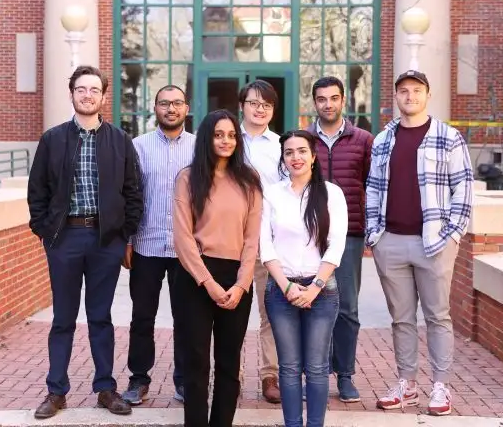Elucidating Molecular Mechanisms of Gating Regulation and Subunit Modulation of Nglycosylation on Ion Channels by Using Molecular Dynamics Simulations
Project Description:
As one of the essential post-translational modifications (PTM) of proteins, glycosylation can significantly impact ion channel function, not only on protein folding and trafficking but also on gating properties and protein-protein interactions. However, the structural basis of how glycosylation regulates the assembly and gating of ion channels continues to be one of the least investigated aspects. Therefore, this study aims to understand the molecular mechanism by which glycosylation modulates ion channel gating and subunit assembly. We hypothesize that the direct and specific glycan-protein interaction is a general mechanism for N-glycosylation modulation in ion channels. To validate this hypothesis, we need to characterize the structural dynamics of glycans and their contacts with ion channels at the atomic level. The very recently available 3D structures of human ion channels and the rapid development of computing power bring a brand-new opportunity to tackle this fundamental challenge using molecular dynamics (MD) simulations. Microsecond-scale all-atom MD simulations will allow us to characterize the dynamics of protein-bound glycans and decipher their structural effects on ion channels. To test whether the characteristic glycan-protein interaction is a general mechanism, we will examine two major glycosylated superfamilies, i.e., voltage-gated and ligand-gated ion channels, and three types of N-glycans, i.e., oligomannose, hybrid, and complex. These two ion channel families will be studied on two structural levels: how the gating behaviors are affected by the glycans directly attached to the pore-forming subunit, and how the channel functions are regulated by glycosylation via inter-subunit interactions. Determining whether characteristic glycan-protein interactions modulate channel assembly and gating will reveal the atomic details of glycosylation regulation of ion channels. This structural understanding will lead to new avenues for structure-based drug design targeting diseases caused by aberrant glycosylations and will contribute to other needed precision-medicine approaches to tackle CDGs and neurological disorders.
Contact Information:
Dr. Jing Li Assistant Professor of Medicinal Chemistry and Research Assistant Professor in the Research Institute of Pharmaceutical Sciences Faser Hall 421 662-915-1071 jli15@olemiss.edu pharm.olemiss.edu/jinglilab/
Associated Personnel:
Eslam Elhanafy
Graduate Student/Research Assistant
Amin Akbari Ahangar
Graduate Student/Research Assistant
Ramya Bandarupalli
Graduate Student/Research Assistant
Shiva Akhlaghi
Graduate Student/Research Assistant
Hayden Blanton
PharmD Student
Greyson Parman,
Undergraduate Student
